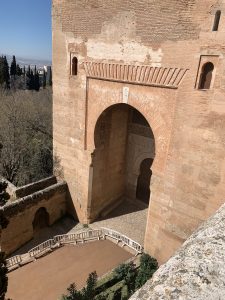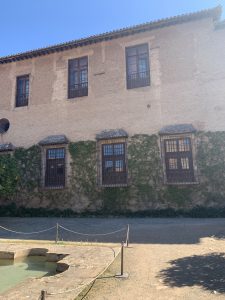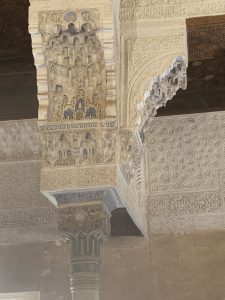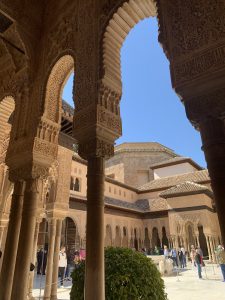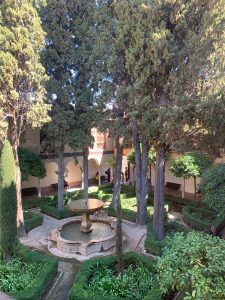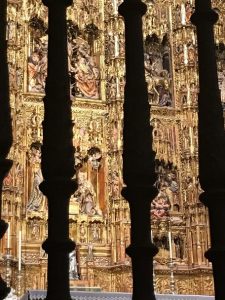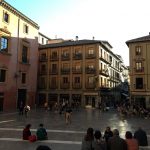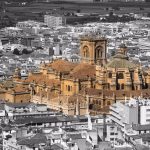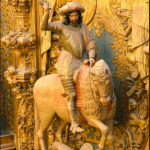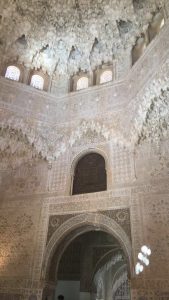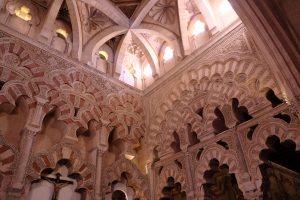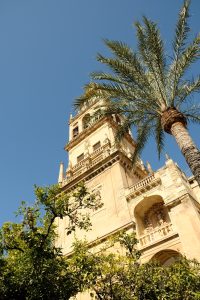By far my favorite parts of the trip to Spain was exploring the Jewish history in the region. It was so inspiring for me to see that there have been efforts to preserve what is left of an erased culture due to expulsion. We have spent the semester learning about the contributions of Spanish Jewry to one of the greatest civilizations of all time, the great era of Muslim Spain, and to see just a select few of those contributions revered publicly in today’s Catholic Spain was simply beautiful.
Our first encounter with the living history of Spanish Jewry was at our first stop in Cordoba. We had a wonderful tour of the Mezquita, the huge Mosque with a Catholic Cathedral inside. I was left wondering, okay, this is clear Muslim and Christian legacy: what about the Jews?
My concern was quickly answered as the second part of the tour led us on a historical time warp through the Jewish quarter.

We were greeted in the quarter by Maimonides, arguably the most famous Jewish man from the Andalusian period. His works, from philosophy, to medicine, to commentary on the Talmud are still influential today.


It is supposed to bring good luck if you rub his lucky foot. So of course, that’s exactly what I did!
We then walked to the only remaining Synagogue in the area. Seeing the one small room with scanty decorations was slightly disappointing after seeing one of the largest Mosques in the world. However, it was still beautiful to see what remains of Jewish culture that has survived through so much chaos, pain, and persecution. We gazed upon the intricate wall details, Hebrew writing, wooden ceiling structure, a Menorah, and the space in the wall which would have served as the ark, the Torah’s resting place.



I couldn’t help but feel a sense of pride as I stood in that room. No matter how hard the Inquisition attempted to rid Spain of its Jews, here was the evidence of their survival. I read the Hebrew letters on the wall, an ancient language now revived that I have the opportunity to understand. I took in the power of the Menorah, one of the oldest and most important Jewish symbols, and its seven branches representing the seven days of creation. Within those seven branches, I felt and I knew that the Sephardic Jewish community had created so much there in Cordoba, and had contributed to Spain’s flourishing during its golden age.


Walking around, I felt that sense of pride and also curiosity as I noticed the nuances of Jewish remembrance in Spain today. Most of it is quite hidden. For example, on the ground or on buildings anywhere in Spain, you can find the seal of the Sephardic foundation, indicating that, in the past, Jews had lived and contributed there. We would be walking along a random street and all of a sudden see the seal, on a wall or between bricks in the ground. It was a subtle, curiosity inducing reminder that Jews were indeed here, and no form of cultural erasure or persecution can change those facts. The Sephardic community’s work to commemorate what was once forced out of their countries is a brave and beautiful act of existence that I very much appreciated during our trip.















